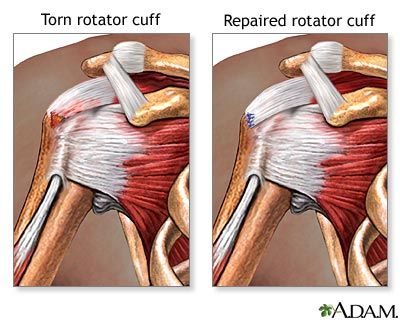
The muscles and tendons of your shoulder make up what is known as the “rotator cuff.” The connective tissue involved joins the bone of the upper arm to the shoulder blade. Additionally, the muscles and tendons of the rotator cuff help the ball and socket joint of the shoulder to remain firmly in place. An injury to this region is characterized by varying degrees of damage to the tendons and muscles of the rotator cuff (subscapularis, supraspinatus, infraspinatus and teres minor).
The most common symptom associated with a rotator cuff injury is pain. The pain is most commonly the result of attempting to use the affected arm; however, in sever cases, continuous pain is not uncommon. Also, an inability to use your arm, or the loss of range of motion could signal a rotator cuff injury.
Rotator cuff injuries are fairly common and involve any injury to the rotator cuff tendons and muscles including but not limited to tendonitis (often sports related), bursitis (often related to overuse) and a strain or tear. Typically, a rotator cuff strain or tear is what we see most often as associated with our client’s auto accidents or slip and fall cases where the arm was used in an attempt to break a fall. The risk of rotator cuff injury increases with age.
Although many minor rotator cuff injuries heal on their own or with the help of exercise therapy, more severe cases may require more extensive (and often expensive) treatments including steroid injections, surgery, or as a last resort, shoulder replacement. Although it is impossible to predict whether or not you will be involved in an auto accident or fall, strengthening your shoulder muscles can greatly decrease the probability of a debilitating injury to the rotator cuff if you are involved in either of the above.